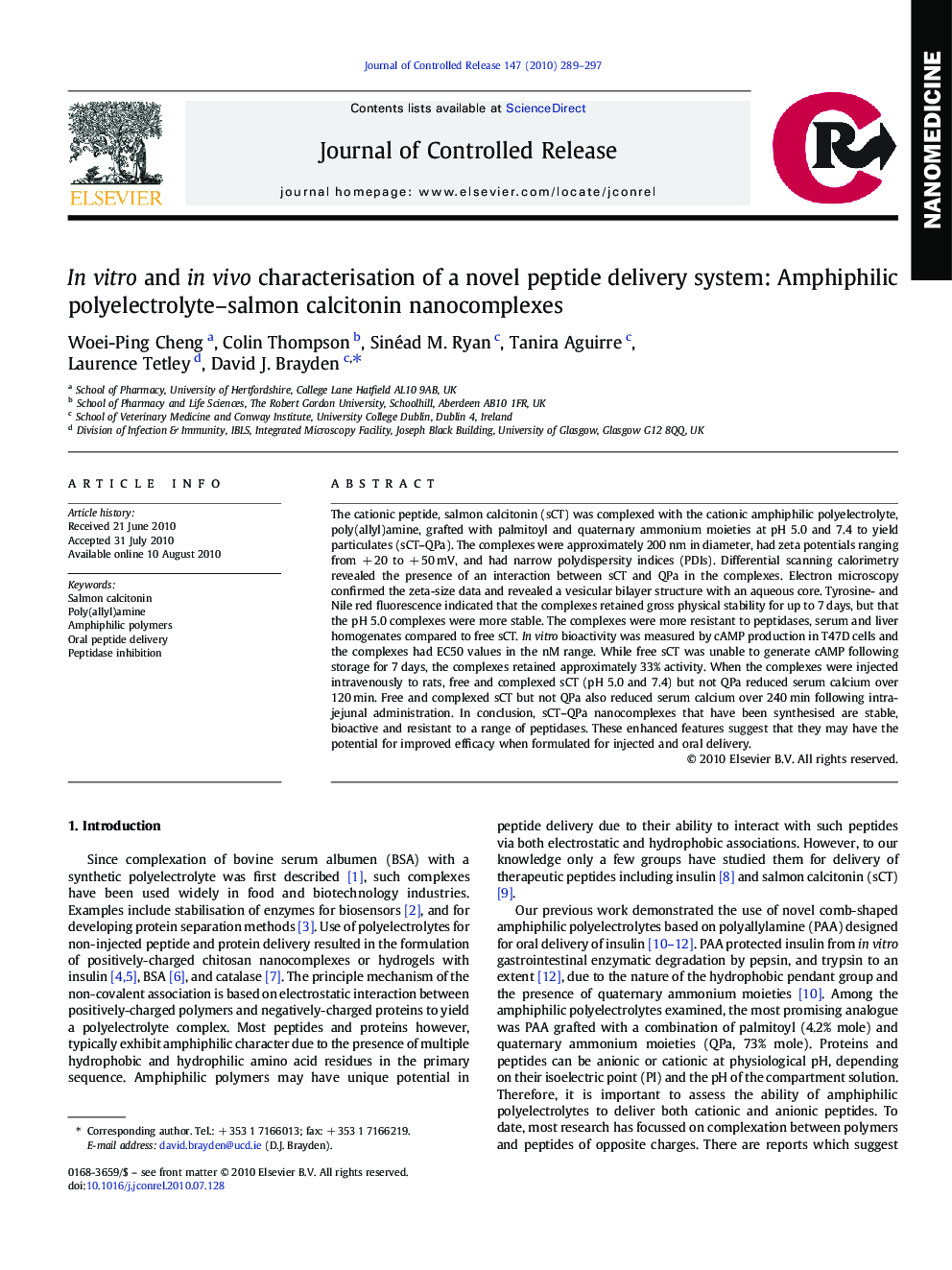| کد مقاله | کد نشریه | سال انتشار | مقاله انگلیسی | نسخه تمام متن |
|---|---|---|---|---|
| 1425524 | 986768 | 2010 | 9 صفحه PDF | دانلود رایگان |

The cationic peptide, salmon calcitonin (sCT) was complexed with the cationic amphiphilic polyelectrolyte, poly(allyl)amine, grafted with palmitoyl and quaternary ammonium moieties at pH 5.0 and 7.4 to yield particulates (sCT–QPa). The complexes were approximately 200 nm in diameter, had zeta potentials ranging from + 20 to + 50 mV, and had narrow polydispersity indices (PDIs). Differential scanning calorimetry revealed the presence of an interaction between sCT and QPa in the complexes. Electron microscopy confirmed the zeta-size data and revealed a vesicular bilayer structure with an aqueous core. Tyrosine- and Nile red fluorescence indicated that the complexes retained gross physical stability for up to 7 days, but that the pH 5.0 complexes were more stable. The complexes were more resistant to peptidases, serum and liver homogenates compared to free sCT. In vitro bioactivity was measured by cAMP production in T47D cells and the complexes had EC50 values in the nM range. While free sCT was unable to generate cAMP following storage for 7 days, the complexes retained approximately 33% activity. When the complexes were injected intravenously to rats, free and complexed sCT (pH 5.0 and 7.4) but not QPa reduced serum calcium over 120 min. Free and complexed sCT but not QPa also reduced serum calcium over 240 min following intra-jejunal administration. In conclusion, sCT–QPa nanocomplexes that have been synthesised are stable, bioactive and resistant to a range of peptidases. These enhanced features suggest that they may have the potential for improved efficacy when formulated for injected and oral delivery.
Graphical AbstractNegatively-stained transmission electron micrograph of sCT–QPa nanocomplexes in pH 7.4 buffer. Scale bar = 200 nm.Figure optionsDownload as PowerPoint slide
Journal: Journal of Controlled Release - Volume 147, Issue 2, 15 October 2010, Pages 289–297